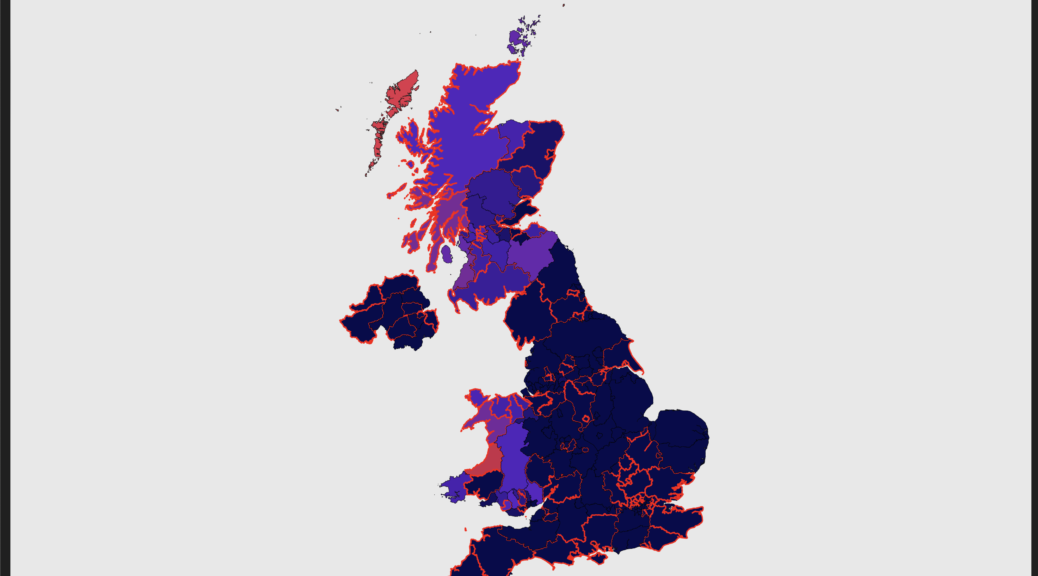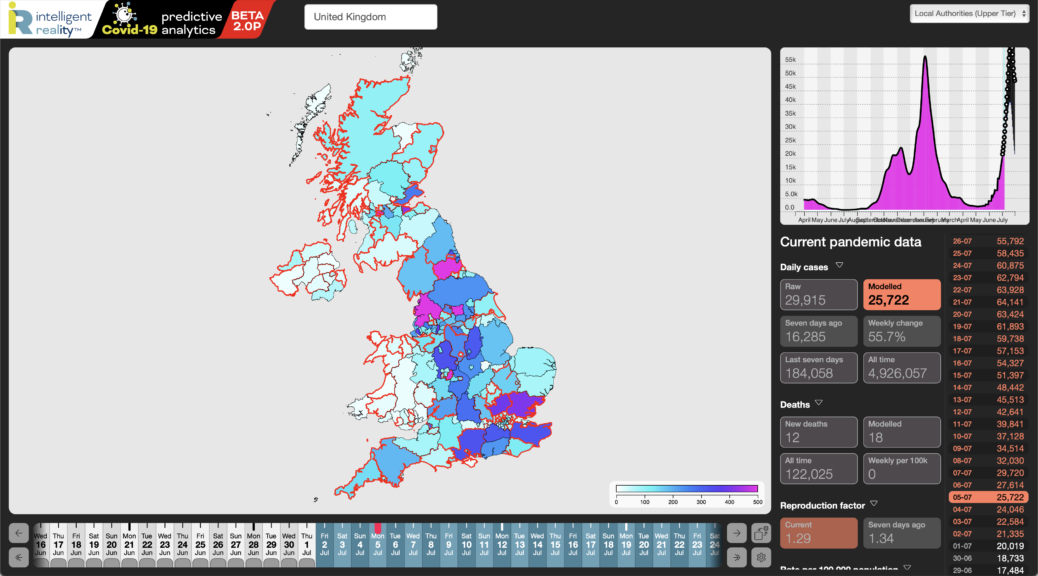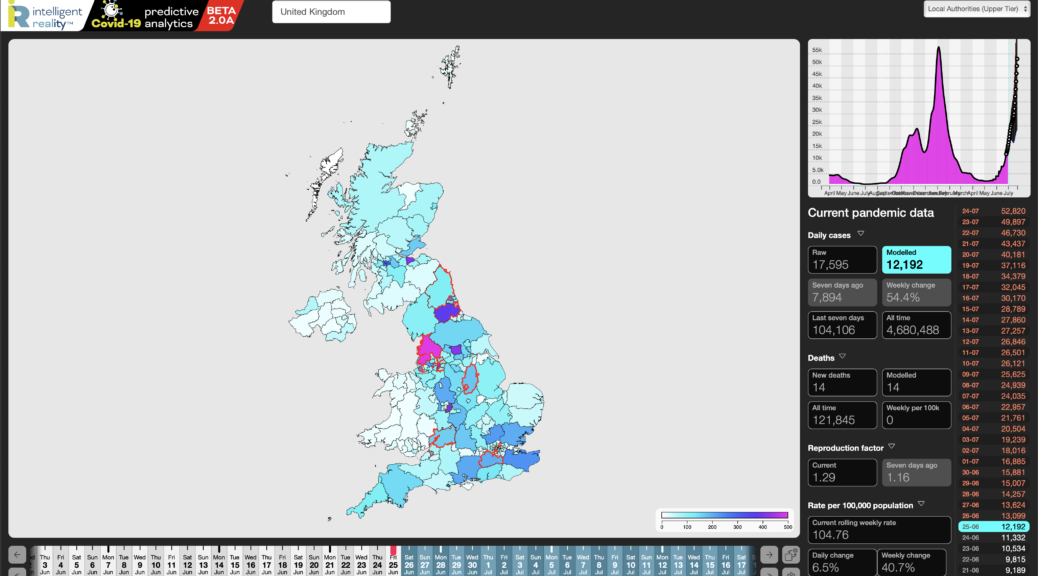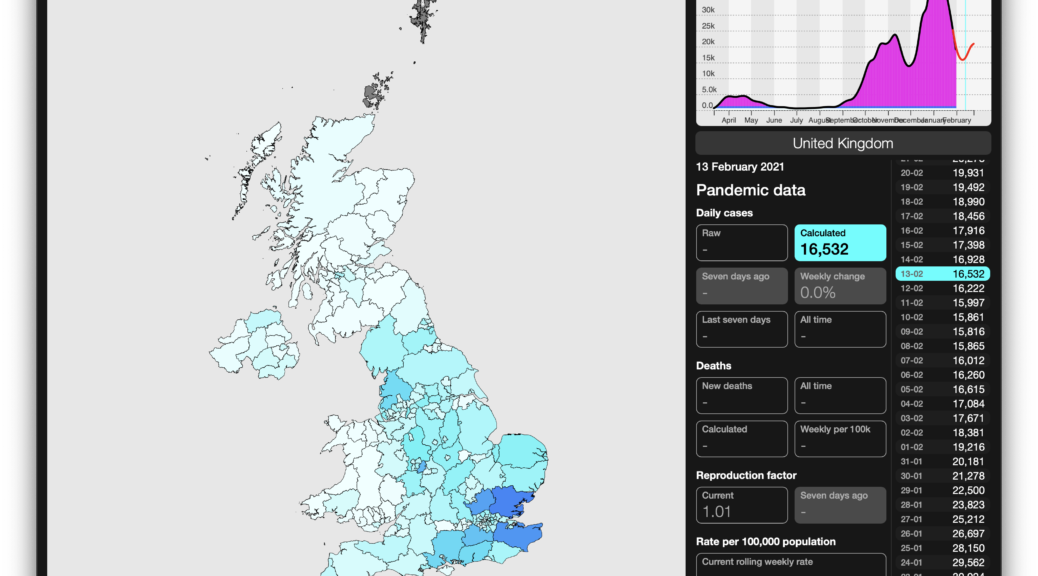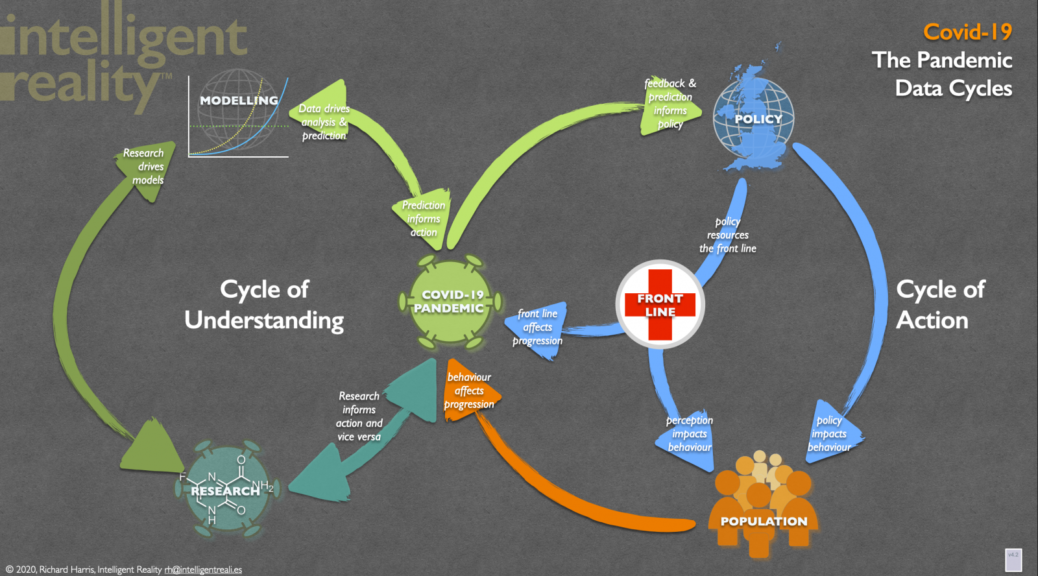The UK’s ‘Prime Minister’ stood up in Parliament today and stated that “Provided the current encouraging trends in the data continue“, Covid-19 restrictions in England would be lifted by the end of the month. At Intelligent Reality, we’re not entirely sure to which data he refers – possibly those from his home dimension? In looking at the published official data, we’re coming to rather different conclusions.
Tag Archives: big data
Never Argue with an AI
I owe our system an apology. After it started forecasting a downturn in Covid-19 cases for Scotland, I was dubious, suggesting that because it didn’t ‘know’ about the combination of the final Euro2020 matches or the relaxing of restrictions at a time of rising case numbers, it was being overly optimistic. I was wrong. I owe it the computational equivalent of a beer or two.
From about 17 June, it was forecasting a peak in case numbers for Scotland on or around 5 July, even if it was short on actual case numbers. Since 22 June though, it’s been spot on in both curve and case numbers. The image is of our case number model, plus our current forecast, overlaid with our forecast from 22 June. Basically, it nailed it. The lesson is not to argue with a system that uses more variables than I can count without taking my socks off.
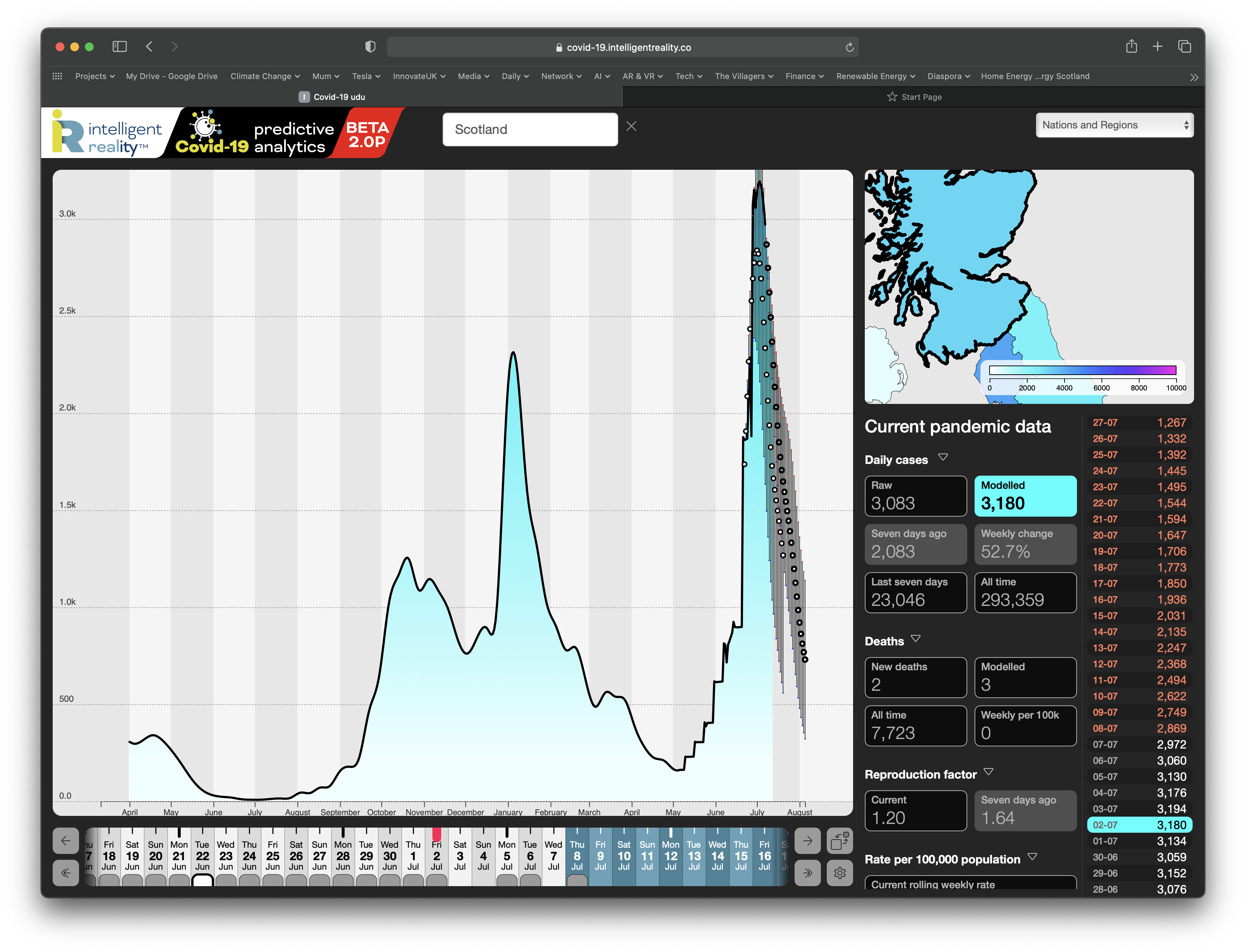
Third Wave Rising
We’ve already shown that our forecasting system has been effective in providing advance warning of the current Third (or Fourth, depending on how you’re counting) wave of Covid-19 cases. With that wave now fully established, we’re looking again at our forecasts, the core data and our dynamic analyses of the pandemic, especially given the latest UK government policy.
With the UK’s rolling weekly case rate now at 238/100k population, up 60% on a week ago, and 40% of the way to the January national peak, we are not reassured. Looking at the behaviour of Chris Whitty’s eyebrows during government briefings, we suspect that neither is he. The current wave is so far unevenly distributed, with urban centres showing the biggest rises, in many cases well above the January peak with, as previously noted, an apparent strong association with those areas most engaged in the Euro 2020 competition. Given little restriction on movement, we believe that these centres of infection are in the process of seeding a ripple of infection across the rest of the country. Continue reading Third Wave Rising
The Impact of G7 and Euro 2020
We’ve now moved from forecast to reality: the UK (and others) are in the throes of a new wave of infections, driven by the Delta variant of the Covid-19 virus. In the UK this has almost certainly been facilitated by both the general relaxation in lockdown and by events such as the G7 Summit and the Euro 2020 competition.
We have now introduced an alert system, which looks for outliers against the current trend in case numbers and pandemic force – this shows that cases and pandemic force spiked in Cornwall following G7 and, as of now, Glasgow (Hampden) just misses out on triggering our alert system and Brent (Wembley) and Edinburgh (the other major source of travelling Scotland fans) both now make our alert list (the red outlined local authorities in the header image). Continue reading The Impact of G7 and Euro 2020
Conscious Uncoupling
As of 11 May, our Covid-19 forecasting system started consistently predicting a coming rise in cases for the UK, driven largely (as it turns out) by the Delta variant of the Covid-19 virus. In the UK this has almost certainly been facilitated by both the general relaxation in lockdown and by events such as the G7 Summit and the Euro 2020 competition. So far, so bad.
Other factors though are far more hopeful – we are seeing a very significant decoupling between case rates, hospital and ICU admissions and in particular death rates. This does demonstrate that the game has changed, and that we need to be rethinking our approach to managing our way out of the pandemic.
That said, government policy in many places still appears to be conditioned by the assumption that the vaccines effectively eliminate transmission, something that simply has not been demonstrated. Continue reading Conscious Uncoupling
The Last Unknown?
A remaining big unknown in the pandemic is not whether vaccines reduce serious symptoms, hospital admissions and deaths – they do – but whether and to what degree vaccines reduce the ability of those vaccinated to infect others, whilst not being symptomatic themselves. As we’ve noted before, initial data on post-vaccination infectivity was somewhat contradictory, so we don’t yet build the impact of vaccination on infectivity into our forecasting.
Building a Better Crystal Ball
Another Friday update: we’re well into our private Beta of our predictive analytics and what-if? modelling system for Covid-19 analytics.
So what is it telling us today?
As of 3rd February our projections are (within their confidence limits, which of course become broader the further out we look, even if the central projection is tracking the reality curve well), that the R number bottoms out about now for the UK as a whole, with case numbers continuing to fall until around the 9th, by which time R number is back to .92 and, by the 13th, it’s more likely to be above 1 again, mostly driven by the SE (Essex particularly) and Merseyside (see header picture).
Two Worlds wins research funding for Covid-19 Intelligent Analytics
Two Worlds is one of the successful applicants to a £40M fund created to support “Business-led innovation in response to global disruption”, a competition that attracted 8,600 applicants. Working with a team including epidemiologists, mathematical modelling specialists and the Department of Computer Science at Imperial College, Two Worlds is using udu’s intelligent analytic software to tackle this problem. Continue reading Two Worlds wins research funding for Covid-19 Intelligent Analytics
From Smart Cities to Rural Communities
I spend much of my time working on various Smart City programmes: anything from modelling need and opportunity to designing architectures for the fusion of large and diverse data sets with live sensor and device data (IoT) and the analytics needed to make the results coherent, timely and relevant. I also live in a very small community, where I was founder of a community company whose efforts have led to our little corner of the Scottish Highlands being in the top 1% of global broadband connectivity. We’re now starting to use that infrastructure to create opportunities for new services and means of service delivery, applying the principles of Smart City programmes to the needs of rural and remote communities, based on the tripod of providing the tools (in the form of the infrastructure), helping people acquire appropriate skills and then nurturing the ideas that then emerge.

